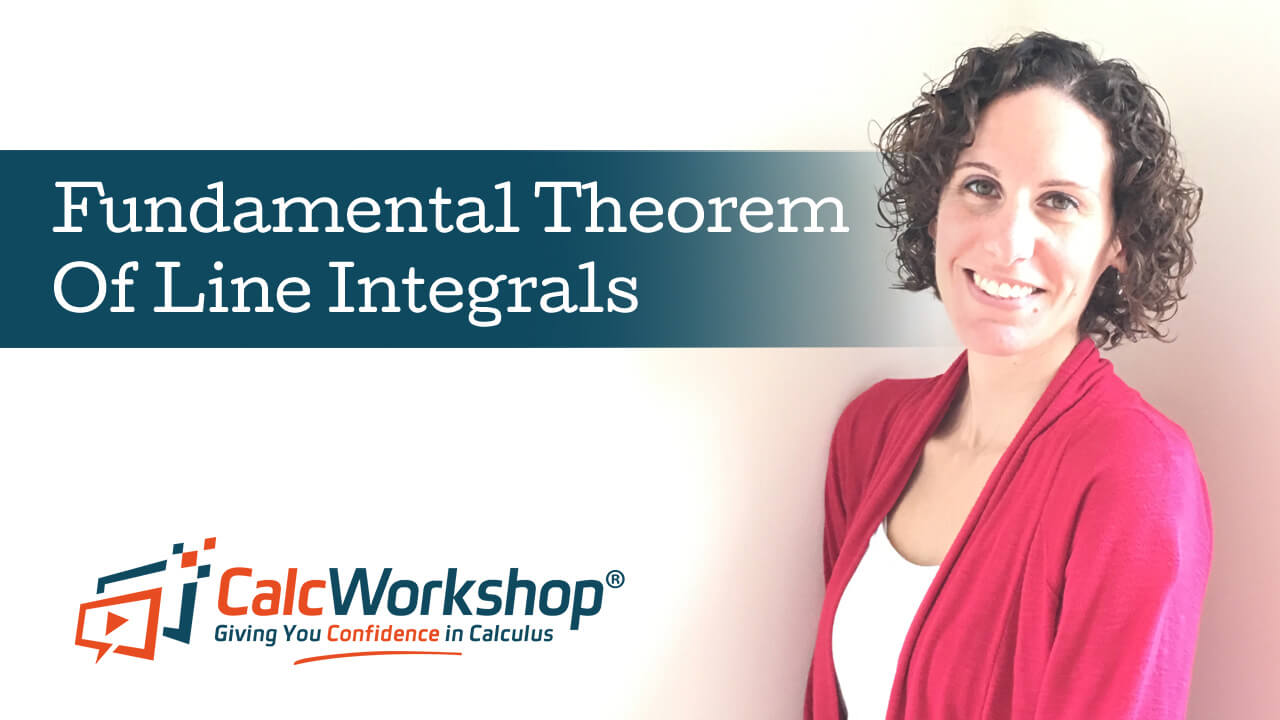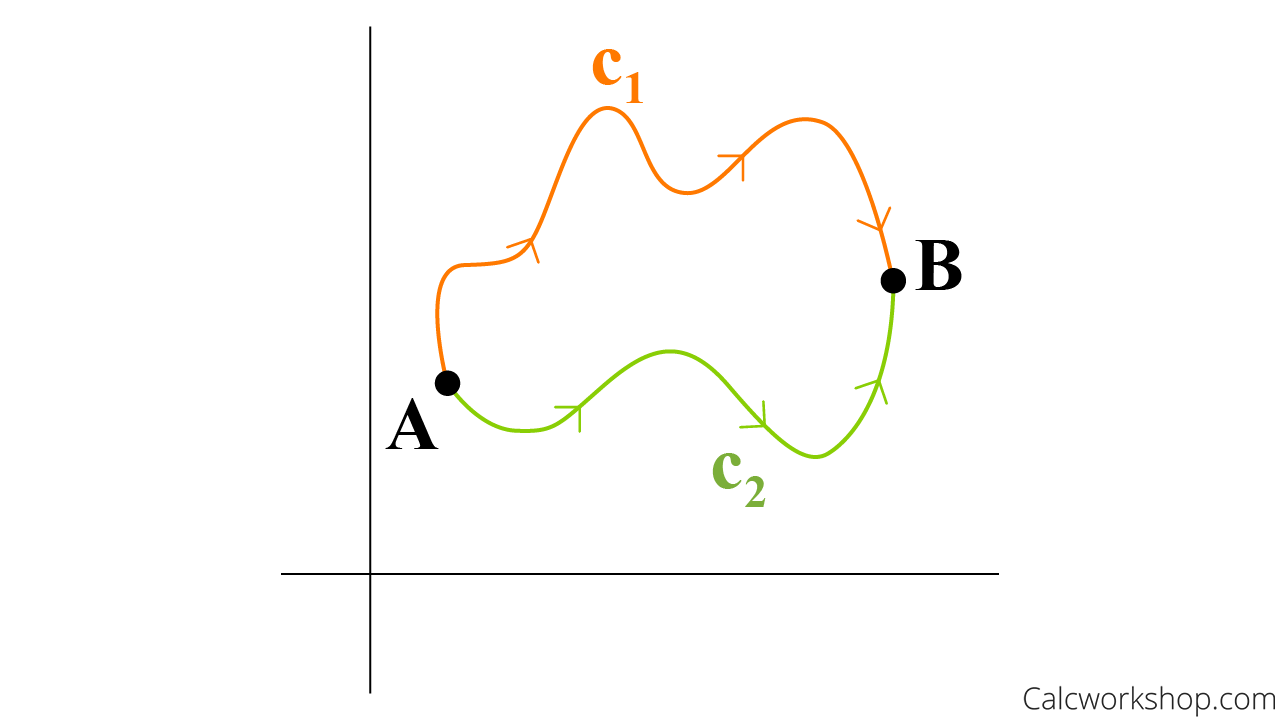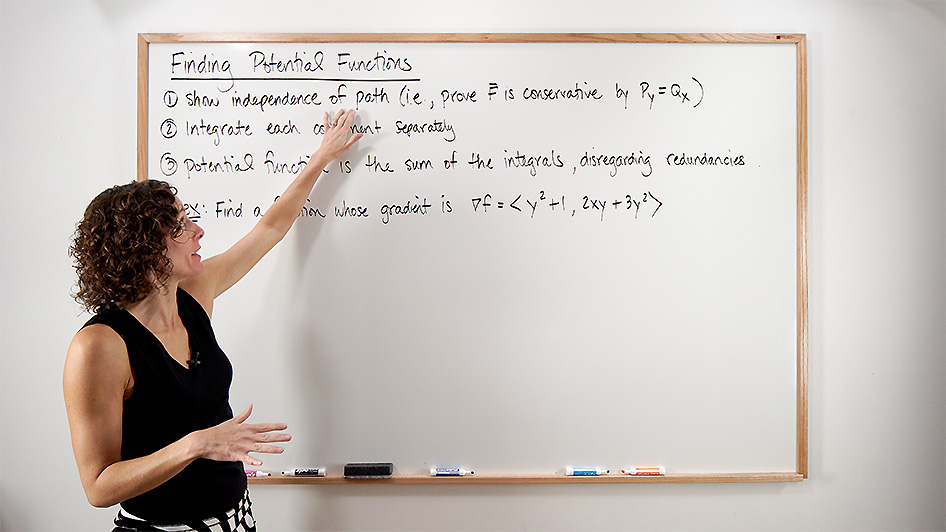What determines the work performed by a vector field?

Jenn, Founder Calcworkshop®, 15+ Years Experience (Licensed & Certified Teacher)
Does the work only depend on the endpoints, or does changing the path while keeping the endpoints fixed make a difference?
In other words, knowing that a line integral gives us insight as to the work performed by a vector field on an object moving along a parametric curve
To answer such a question, we need the fundamental theorem of line integrals and a look into a special type of vector field called conservative vector fields.
Let’s investigate.
Fundamental Theorem Of Line Integrals
Think about a smooth curve
Notice how this is just an extension of the fundamental theorem of calculus (FTC) to line integrals.
In fact, this is explicitly saying that a line integral in a conservative vector field is independent of path.
Path Independence Of Line Integrals
Let me explain further.
Recall from our lesson on vector fields,
But here’s what cool. The fundamental theorem for line integrals states that
But what does path independence really mean?
Suppose

Path Independence Line Integrals
The starting point and stopping point are fixed, but the path or route we take to get from point A to point B is different.
But here’s what’s important…it doesn’t matter what path we choose because they both start and stop at the same place.
So, if a vector field is path-independent, then
More specifically…
Regardless of whether you take path
This means we can now easily answer our earlier question.
In a conservative force field, the amount of work required to move an object from point
Cool, right?
Please note that in a non-conservative vector field (i.e., a general vector field),
but in a conservative vector field, for any two paths and that have the same starting and ending points, then .
Example
Let’s look at an example.
Suppose
Calculate
Because we know that
is conservative and independent of the path, we can use the fundamental theorem of line integrals.
Isn’t this a fantastic concept?
Because as Paul’s Online Notes so accurately summarizes, we now see that for these kinds of line integrals, we didn’t need to know the curve to get the answer because if we can prove the independence of path, we can use any path we want, and we’ll always get the same results.
Is A Vector Field Conservative?
But how do we determine whether a vector field is conservative and thus independent of the path?
Well, as it turns out, the only vector fields that are conservative satisfy the following theorem:
Suppose
is a vector field that is continuous on a region , where is open and connected. is independent of path if and only if for every closed path . And if is independent of path in , then is a conservative vector field in and there exists a function such that .
While this is all well and good and extremely important to note about conservative vector fields, it’s not a useful computational tool.
Thankfully, there’s an easy way for us to determine if
Assume
And for three-dimensional vector fields such as
We will predominately work with two-dimensional vector fields and leave three-dimensional vector fields, and the concept of the “curl” for a later lesson.
Example
Okay, so let’s put our new theorem to work with an example.
Is
First, we identify
and .
Next, we take our partial derivatives and check to see that they are equal.
Because
we know that is conservative.
Easy!
Finding Potential Functions
And now that we know how to determine whether or not a vector field is independent of path, we now need to learn how to find a potential function.
There are several ways this can be computed, but the easiest method is the one outlined below:
- Show that
- Find
- All terms create the potential function
While these steps may seem strange at first, I promise you that they are pretty easy to perform.
Example
Let’s work through an example to see how.
Given
First, we must confirm that
is a conservative vector field.
Next, we will integrate
with respect to and with respect to .
Now, all we have to do is put our terms together, only counting duplicate terms once.
, where is a constant. That’s it!
And our solution can be easily verified as true by checking that
!
Together we will learn how to prove a vector field is conservative; thus, showing path independence, find a potential function
Video Tutorial w/ Full Lesson & Detailed Examples (Video)

Get access to all the courses and over 450 HD videos with your subscription
Monthly and Yearly Plans Available
Still wondering if CalcWorkshop is right for you?
Take a Tour and find out how a membership can take the struggle out of learning math.